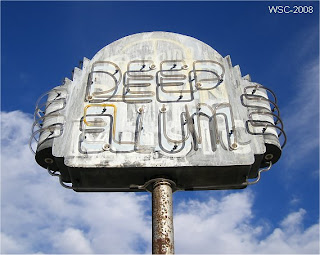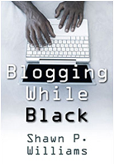Shawn Williams: A Beale Street model for Deep Ellum
After I wrote this article I thought, wouldn’t a Johnny Taylor themed restaurant look good in Deep Ellum (or South Dallas)? Some of ya’ll entrepreneur types should be able to take that one and run.
Anyway, here’s the article I wrote for the Dallas Morning News almost in its entirety. To see the few parts I didn’t paste, click here. Thanks to Sharon Grigsby for the space.
From DallasNews.com

To borrow a phrase from legendary musician Robert Johnson, Deep Ellum has the crossroad blues. The path toward the future may mean taking a look back.
With the possible exception of the city’s preaching tradition, the blues scene in the early part of the last century represents the biggest mark left on this city by African-Americans. But the community is letting that rich history die by allowing the place where it all went down to lose its soul.
It’s part of a trend nationwide where the African-American community neglects history that is not intimately tied to the civil rights movement. This is even more pronounced in our city, where not only is the history ignored, it’s all but forgotten.
Deep Ellum should be the same type of cultural destination as the 18th and Vine area of Kansas City, which houses the American Jazz Museum and Negro League Baseball Museum. First, that means residents would have to acknowledge – and in many cases, learn – the district’s rich history before embracing it and rallying for its revival.
Consider this: In 2003, the South Dallas/Fair Park Entertainment District Study was presented to the Dallas City Council. The document (now in the hands of a local nonprofit) proposed creating a mixed-use retail-commercial development that would market particularly toward African-American conventioneers, tourists and local residents. This concept was modeled after Beale Street, a thriving three-block section of downtown Memphis, which consists of a number of nightclubs and restaurants. Beale Street was home to a thriving blues scene at the turn of the 20th century before becoming a collection of closed shops and rundown buildings in the 1960’s.
Sound familiar? The infrastructure for this model already exists – in Deep Ellum.
The Dallas City Plan Commission recently recommended the issuance of a specific-use permit for a live music bar and lounge to open in the old Blue Cat Blues in Deep Ellum. A soul food restaurant also moved into the neighborhood in recent weeks. While every business in the area doesn’t have to be blues-themed, a nod to the heritage would go a long way toward reviving the entertainment district that seems to always teeter between “struggling” and “on the verge.”
Any plans to revisit the history of Deep Ellum should include the redevelopment of The Grand Temple of the Black Knights of Pythias Building. The Pythian Temple sits on the edge of Deep Ellum and was the first commercial building in town built by and for Dallas’ black residents. It’s also one of the few Dallas structures other than churches designed by a black architect. The building that housed the city’s first black dentist and surgeon would make a great business incubator for a new generation of professionals and entrepreneurs.
Second Avenue and a little blues music could bind two historic parts of our city.
Again, click here to see the entire article.




